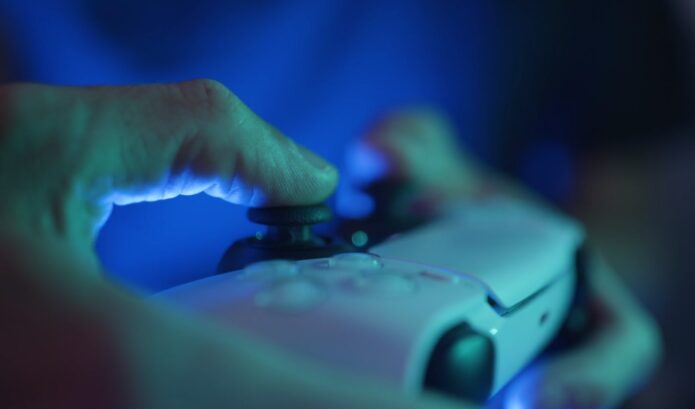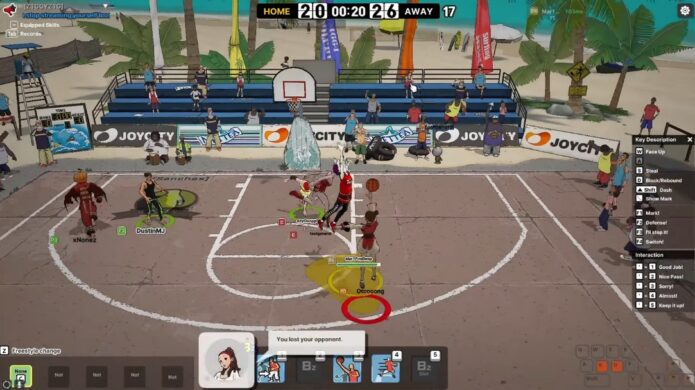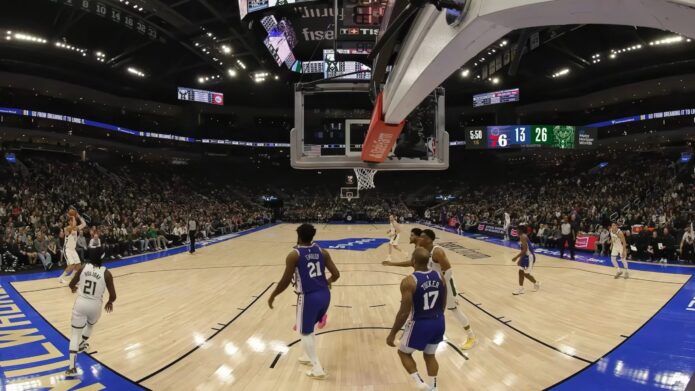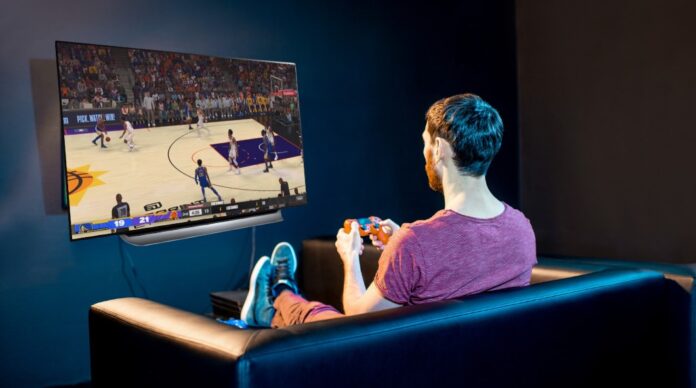Basketball is one of the world’s most popular sports thanks to its accessibility and exciting pace. Professional players in the NBA and FIBA are also known for their unique playing styles and creativity on the court. Compared to other sports, basketball offers players more freedom to show off. For example, Steph Curry and James Harden are masters of the three, while players like LeBron James and Ja Morant are known for dunking and driving into the box.
These factors haven’t only made basketball a top sport worldwide, but it’s also made basketball simulation games a great option for sports gamers. In fact, when looking back at the long list of basketball simulation video games, there are dozens of award-winning releases and cult hits to explore. Even in the context of casino games, basketball has left its mark.
Slots like Basketball Star and Basketball Star on Fire (both from Microgaming) also showcase players and graphics that are on par with EA releases. Though they aren’t quite as developed as full-length video games and don’t include the names and likeness of real-life players, they’re some of the most popular choices for players within the sports category.
Beyond the realm of Basketball Star and Basketball Star on Fire, there are dozens of high-quality basketball simulations. And just like the flashiest players in the NBA, they’re absolutely unlike their contemporaries. Let’s explore the realm of basketball video games, including the most imaginative releases based on the NBA and its biggest stars.
Simulations Meet Imagination

Compared to sports simulations that cover North American leagues like the NFL, NHL, and MLB, official releases from the NBA haven’t been afraid to dive into innovative territory. As early as the 1990s, the NBA worked with game developers to release NBA Jam (1993), and then NBA Street (2001), in order to offer gamers a more unique simulation.
Both series allowed players to compete in normal franchise modes but also incorporated combat-style moves and insane dunks. NBA Street was more focused on Mortal Kombat-style combinations, allowing players to level up with moves like the backbreaker and wake-up call. NBA Jam, by contrast, focused more deeply on hardcore dunk moves. In both, cheeky announcers help keep the game focused, adding humor and excitement to each play.
Basketball Stars Launch Popular Games
Clearly, the NBA hasn’t been afraid to push into innovative territory. Along with series like NBA Jam and NBA Street, there have also been a number of notable releases focused on individual stars. First came One on One: Dr. J vs Larry Bird (1983), followed by Jordan vs. Bird: One on One (1988). Both focused on the hype surrounding the best players from the 1980s, allowing players to step into the shoes of their favorite stars.
In 1993, Barkley’s Shut Up and Jam was released. Like the forthcoming NBA Jam series, this game allowed players to battle it out playing street basketball—not in official NBA games. This allowed for a bit more creative freedom. However, the main focus remained on letting players compete as their favorite stars, including Charles Barkley and fifteen other real-life players.
However, one of the more unique and memorable releases from the basketball world was 1994’s Shaq Fu. Rather than a basketball simulation, this game saw Shaquille O’Neill step into a world of player v. player fighting matches. This game was a critical failure but ended up becoming a cult hit with players, eventually earning a second release in 2018. Though it’s not focused on basketball, it highlights the reach of the sport’s top players within the context of gaming.
Love of the Hectic

So far, we’ve outlined some of the most popular basketball games and what has made them stand out. Early hits like NBA Jam and NBA Street focused on sensationalism and energy, while other hits focused more on street ball and individual stars. But with both examples, there’s an emphasis on surrealism and movement—a type of hectic energy that mirrors a real-life game as teams move back and forth across the court.
Some more recent basketball hits have focused on this element of the game. Freestyle 2: Street Basketball is a free-to-play title that lets players craft their own basketball player and take on opponents in street pickup games. The focus is on personalization and style, allowing players to dunk and alley-oop their way to a win. Toss in a unique design and it has all the flare and excitement of a real-life game… only repackaged into a highly colorful game.
Regular Human Basketball, on the other hand, takes things in a much weirder (and still delightfully hectic) direction. This basketball game has players step into the shoes of large, strange machines, which use odd tools to help them score points. Once again, it’s a stylish and funky twist on the game that appeals to all types of fans.
Adam Silver’s NBA: Open to Tech

Compared to sports like football, hockey, and baseball, basketball fans have access to truly imaginative simulations and takes on the game. Overwhelmingly, these releases build on the casual and stylish nature of basketball, paying homage to its street origins. But it’s still worth pointing out that the NBA, especially under commissioner Adam Silver, has made strides to incorporate tech into the league.
Though Silver hasn’t spearheaded video games based on the league aside from licensing 2K releases, there are two notable pursuits that relate to techy basketball fans (including gamers). First is the launch of NBA Courtside, a special AR and VR-capable live broadcast of certain games. Using a Meta Quest VR headset, fans with VR setups can virtually sit courtside at matches, providing an unprecedented fan experience.
Similarly, Silver’s NBA also launched a highly successful (if short-lived) NFT marketplace called Top Shot. While this project hasn’t been able to maintain the hype built in its first year, it’s yet another indicator that basketball (and, in particular, the NBA) is much more open and married to tech than other leagues. Additionally, the NBA’s experience in handling NFTs (via Dapper Labs) and launching a VR broadcast (via Meta’s Horizon Worlds app) has set the league up for success in the future, especially related to games released on blockchain and/or VR.

